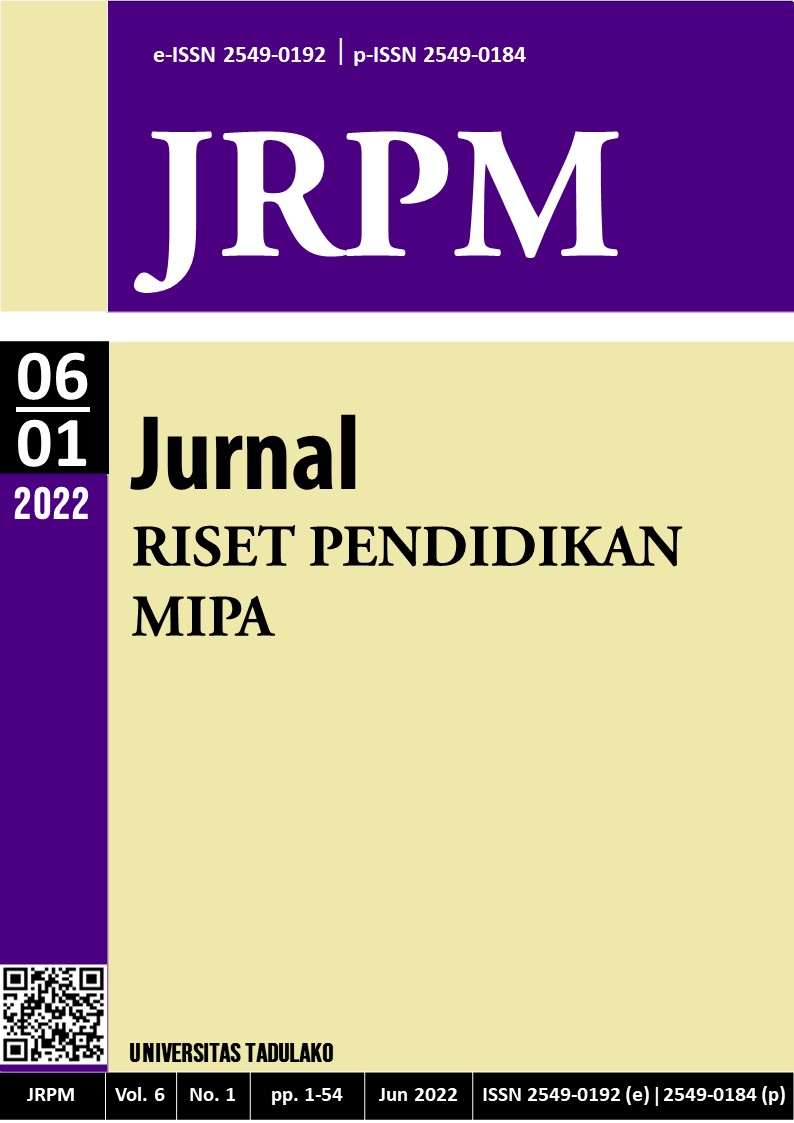Application of the Jigsaw Type Cooperative Learning Model to Improve Student Learning Outcomes in the Material of Addition Fraction in Elementary School
DOI:
https://doi.org/10.22487/j25490192.2022.v6.i1.pp29-36Keywords:
Learning Outcomes and Student Activities, Jigsaw Cooperative Learning Model and Addition of FractionAbstract
This research is a classroom action research which consists of several aspects of action and the main observation is increasing student learning outcomes by using the discussion method. The research was conducted at SDN Duyu involving 19 students enrolled in the 2020/2021 school year. Using the Kemmis and Mc research design. Taggart, which consists of two cycles. Where in each cycle two class meetings are held and each cycle consists of four stages, namely planning, implementing, observing, and reflecting. The results showed that in the first cycle of classical completeness measures 51.58% was obtained and the classical absorption was 52.63%. In the action cycle II obtained 77.89% classical completeness and 89.47% classical absorption. This means that learning in cycle II has met the indicators of success with a minimum classical completeness value of 75% and a minimum classical absorption of 60%. Based on the average value of classical absorption and classical learning mastery in cycle II learning activities, it can be concluded that increasing learning with the Jigsaw cooperative learning model can improve fifth grade student learning outcomes in the addition of fractions at SDN Duyu.
Downloads
References
Apandi, D., Kariadinata, R., & Susilawati, W. (2014). Pembelajaran matematika dengan model kooperatif tipe jigsaw untuk meningkatkan komunikasi matematis siswa pada mata pelajaran perbandingan. Jurnal Analisis, 1(2), 50-56.
Ati'ah, S., Pambudi, D. S., & Trapsilasiwi, D. (2014). Penerapan model pembelajaran kooperatif tipe jigsaw untuk mengatasi kesalahan siswa dalam menyelesaikan soal pada mata pelajaran faktorisasi suku aljabar siswa kelas VIII semester ganjil SMP Negeri 11 Jember Tahun Pelajaran 2013/2014. Kadikma, 5(3), 51-60.
Basuki, N. (2015). Peningkatan hasil belajar dan aktivitas siswa dengan menggunakan model pembelajaran kooperatif tipe jigsaw pada mata pelajaran matematika siswa kelas VII SMPN 2 Bumiratu nuban tahun ajaran 2014/2015. Aksioma Jurnal Pendidikan Matematika, 1(2), 76-89.
Iriani, T. (2019). Penerapan model pembelajaran kooperatif tipe jigsaw dalam meningkatkan hasil belajar matematika pada operasi hitung pecahan. Nusantara: Jurnal Pendidikan dan Ilmu Sosial, 1(2), 1-10.
Johariah, J. (2019). Meningkatkan prestasi belajar matematika pada materi pecahan melalui penerapan model pembelajaran kooperatif tipe jigsaw. Nusantara, 1(2), 20-33.
Jumiati, Sari, M., & Akmalia, D. (2011). Peningkatan hasil belajar menggunakan model numbereds head together (NHT) tidak ada materi tumbuhan pada kelas V Gerak II SMP Sei Putih Kampar. Jurnal Kuliah, 2(2), 161-185.
Masril. (2018). Peningkatan hasil belajar bangun datar melalui strategi pembelajaran kooperatif tipe jigsaw pada siswa kelas V SD Negeri 02 Silaut Kecamatan Silaut. diterbitkan oleh Indonesian Institute for Counseling, Education and Therapy (IICET). JPPI (Jurnal Riset Pendidikan Indonesia), 4(1), 27-33.
Mulyani, A., & Anditia, D. R. (2016). Penerapan Model Pembelajaran Kooperatif Tipe Jigsaw untuk Meningkatkan Hasil Belajar Matematika Siswa Kelas V Sekolah Dasar Kelurahan Pasir Penyu. Jurnal Pedagogi Pendidikan Dasar, 4(1), 18-34.
Muslich, M. (2013). Pedoman praktis guru profesional, pelaksanaan PTK (Penelitian Tindakan Kelas) itu mudah (Penelitian Tindakan Kelas). Jakarta: Bumi Literasi.
Negaral, Kusmayadi, & Sujadi. (2015). Eksperimen model pembelajaran kooperatif tipe jigsaw dengan pendekatan CTL terhadap prestasi belajar siswa dan aspek afektif siswa pada materi bangun ruang bangun datar ditinjau dari kemampuan spasial. Jurnal Pembelajaran Matematika Elektronik, 3(10), 1110-1126.
Nurfitriyanti. (2017). Pengaruh model pembelajaran kooperatif tipe jigsaw terhadap hasil belajar matematika ditinjau dari kecerdasan emosional. Jurnal Formatif, 7(2), 153-162.
Rakhmawati, S., Muspiroh, N., & Azmi, N. (2016). Analisis Implementasi Kurikulum 2013 Ditinjau dari Standar Proses Pada Pembelajaran Biologi Kelas X SMA Negeri 1 Krangkeng. Scientiae Educatia: Jurnal Sains dan Pendidikan Sains, 5(2), 156-164.
Rokhis. (2019). Penerapan model pembelajaran kooperatif tipe jigsaw untuk meningkatkan hasil belajar matematika tentang tata letak benda pada siswa kelas VI SDN 6 Besito. Jurnal Ilmiah Pendidikan Inopendas, 2(1), 18-29.
Rosyidah, U. (2016). Pengaruh Model Pembelajaran Kooperatif Jigsaw Terhadap Hasil Belajar Matematika Siswa Kelas VIII SMP Negeri 6 Metro. SAP (Komposisi Artikel Pendidikan), 1(2), 65-79.
Rusman. (2011). Model pembelajaran. Jakarta: Raja Grafindo Persada.
Slavia. (2012). Analisis teori pembelajaran kooperatif, penelitian dan praktek, (Penerjemah nurulita). Bandung: Nusamedia.
Sumiati. (2008). Metode pembelajaran. Bandung: CV Wacana Prima.
Suprijono, A. (2012). Pembelajaran kooperatif (Teori dan aplikasi Paikem). Yogyakarta: Perpustakaan Pelajar.
Syaripah. (2017). Penerapan pembelajaran kooperatif tipe jigsaw dalam upaya meningkatkan pengelolaan pembelajaran dan aktivitas siswa kelas V MIS Guppi NO.13 Tasik Malaya Curup Utara. Jurnal Pendidikan Dasar, 1(01), 65-87.
Winkel, W.S. 1996. Psikologi pengajaran. Jakarta: PT Grasindo.
Zubaidah, S. (2016). Keterampilan Abad 21: Keterampilan yang diajarkan melalui pembelajaran. Seminar Pendidikan Nasional, 21(2), 1-17.
Downloads
Published
How to Cite
Issue
Section
License
Copyright (c) 2022 Lily Yunita Kusumaningrum, Dasa Ismaimuza, Nurhayadi Nurhayadi

This work is licensed under a Creative Commons Attribution-NonCommercial 4.0 International License.



